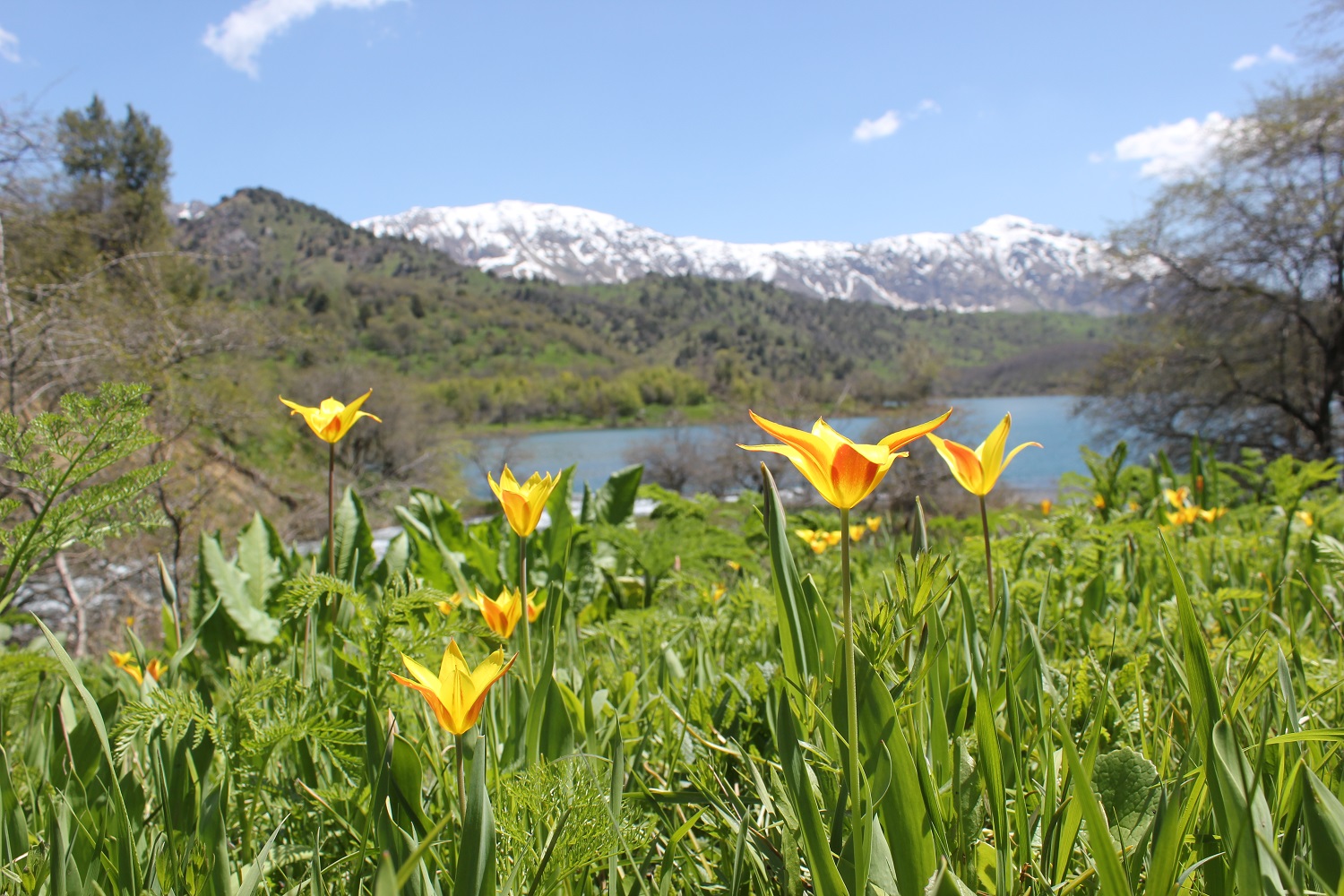Dr Brett Wilson (2013) studied Natural Sciences at St John’s before completing a PhD in the Plant Sciences Department focusing on wild tulip diversity in Central Asia. He is currently Protected Planet Programme Officer at the UN Environment Programme World Conservation Monitoring Centre (UNEP-WCMC). In this article for The Eagle 2024 he shares his experiences of fieldwork expeditions tracking wild tulips in Central Asia.
Tulips are one of the best-known garden plants. Spring gardens are full of the blooms of this horticultural favourite, which constitute a billion-euro trade. There may be as many as 14,000 cultivars in circulation, primarily grown in the Netherlands; however, people often don’t realise that tulips only entered Europe in the sixteenth century.
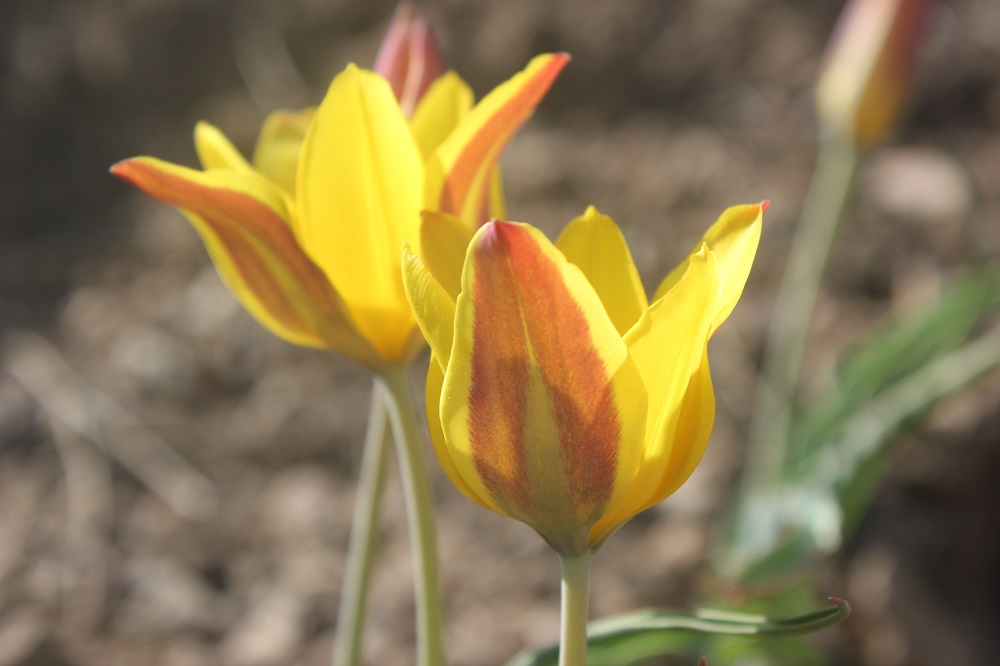
These flowers originally came to Europe from the Ottoman Empire, where ruling Sultans made tulips a mainstay of palace gardens, and they were widely depicted in art and even used as a religious symbol. It was there that the cultivation of this plant really began. Yet tulips could be found in the gardens of Bactria and Persia even before this. In fact, wild tulips, the ancestral cousins of our beloved garden favourites, have existed for millions of years. Sadly, in recent decades little attention has been paid to these remarkable ancestors or to how modern-day tulips are faring in their native habitats.
This lacuna was recognised by Professor Sam Brockington from the Cambridge University Botanic Garden, and Vicky Wilkins and David Gill from Fauna & Flora, an international conservation charity based in Cambridge. The presence of the national collection of wild tulips at the Botanic Garden and Fauna & Flora’s international network led to the establishment of a collaborative project aiming to ensure the
survival of wild tulips in our ever-changing world. This project encompassed a PhD studentship, which I took up. In 2018 PhD funding was obtained and a broader grant was secured from the Darwin Initiative (a UK government funding body) to deliver a four-year-long multifaceted scheme of work.

Sam and I were the primary research leads for this project. Our first task was to establish which tulip species truly existed in the wild. This required answering complex taxonomic questions (taxonomy is the organising of living organisms into a hierarchical system of categories and classifications) that had arisen since 1753 when Linnaeus described the first species of tulip. These questions had grown in number and complexity as more species had been described, including over fifteen new species since 2010. Under the tutelage of Sam, I began to collect tulip material and data from botanic garden collections, herbaria, online databases and, most excitingly, from wild populations. Using these samples, we employed modern genetic approaches to understand the relationship between different wild tulips.
Wild tulips grow naturally from western China and Mongolia across large swathes of Eurasia to southern Spain and Portugal, and a single species even occurs in northern Africa. But two areas of the world are
particularly rich in tulip diversity. The primary centre of diversity falls within the region of Central Asia, with the secondary centre of diversity in an area covering parts of western Iran, Turkey and the Caucasus. Given Central Asia’s extraordinary range of wild tulips, found across the mountain meadows, grasslands, steppes and semideserts of the region, this is where the project focused much of its attention. Collaborations were established with researchers at universities and botanic gardens throughout Kyrgyzstan, Tajikistan and Uzbekistan, facilitated by Fauna & Flora’s local teams in Kyrgyzstan and Tajikistan. I travelled in the region alongside collaborators during the springs of 2019 and 2022 collecting material and data.
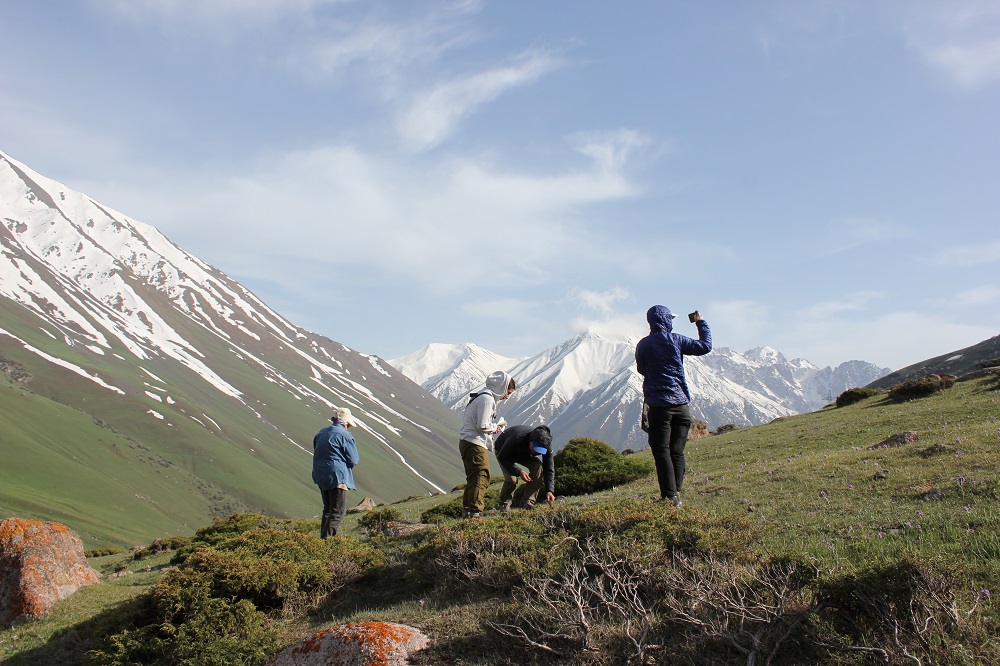
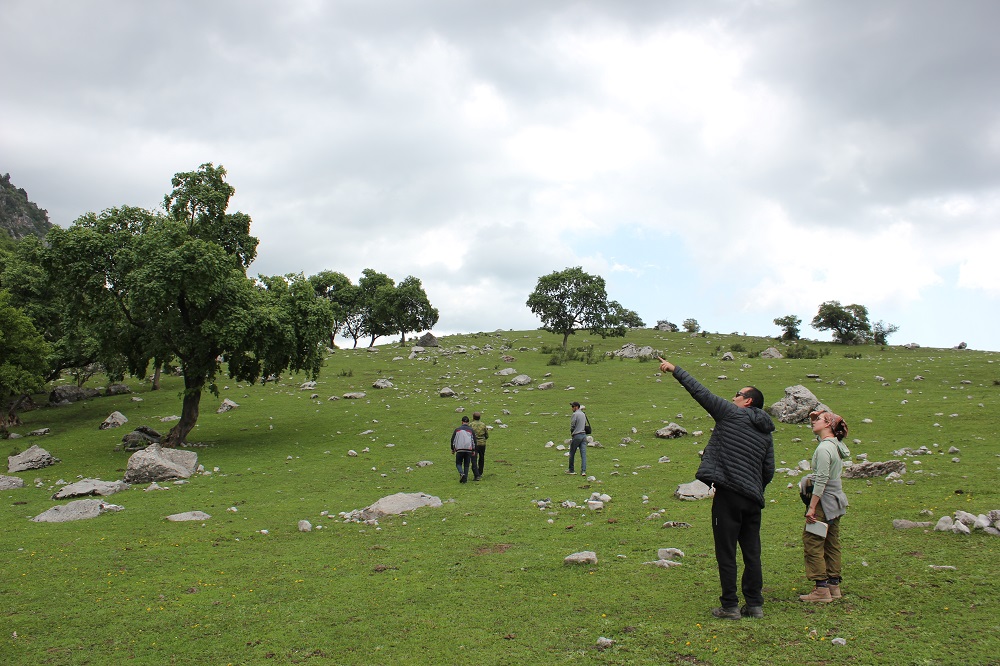
Stepping into the mountainous landscape of northern Kyrgyzstan, I spied my first wild tulip. It was a small, white-flowering, dainty-looking plant hiding behind some rocks on a heavily grazed slope. In the
following years, I would see over twenty-five wild tulip species, each as wonderful and majestic in its own way as the last. As the project proceeded, I found myself scrabbling up scree slopes, descending steep grassy hillsides, baking in bare, dusty ancient sea beds, and even climbing to the snow line under the watchful gaze of a nearby golden eagle. I scrambled, hiked and tumbled, with wild tulips initially appearing as flashes of red, yellow, white or pink.
Fieldwork is often glamourised – and it does offer incredible opportunities to see nature – but it is not always a smooth, comfortable process. At one point our car broke down on a mountain pass, requiring us to spend half a day pushing it until we managed to catch a tow, and there were numerous occasions
where I went a surprising number of days without a shower. Yet, during these years following the footsteps of thousand-year-old Silk Road traders, we collected an enormous amount of valuable information.
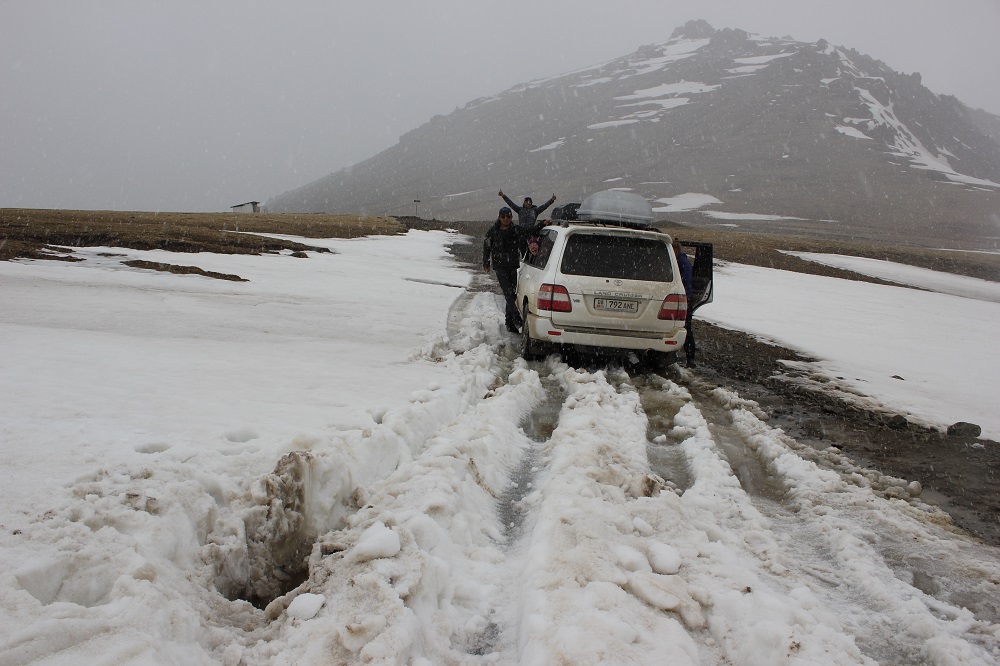
Back in the lab we were able to sequence the DNA of 245 different tulips, with over 120 of these collected from the wild. Crucially, we had collected material from around 86% of all known wild tulip species. This DNA led to some exciting findings. We discovered a new tulip species that we named Tulipa Toktogulica, a small, yellow-flowering plant found only in the Toktogul region of Kyrgyzstan. We also discovered a new group of tulip species that was so distinct from other known groups that it warranted recognition under a new name, Eduardoregelia. And we were finally able to create an up-to-date list of species that can now be used by researchers worldwide to better understand wild tulip diversity.
Genetic data also allows us to explore the evolutionary history of organisms, enabling us to see where, when and why tulips evolved, and how they then dispersed to their current locations. We surmised that the original tulip appeared around 32 million years ago in the broader Central Asia region before beginning to diversify 22 million years ago as the region became drier and mountain ranges appeared, likely creating barriers between populations. Around 7 million years ago tulips spread, primarily through the steppe land of Kazakhstan and Russia, to the Caucasus, Turkey and Iran, where they diversified further, eventually reaching the Mediterranean via the Middle East and Turkey. Importantly, our research reaffirmed that Central Asia has remained a key region for tulips throughout their history.
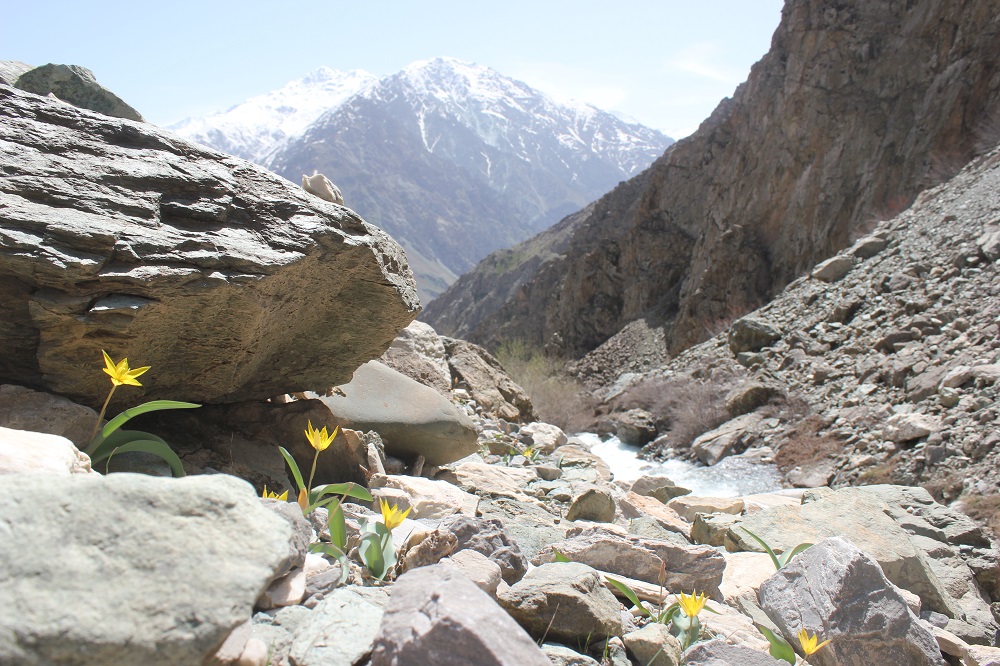
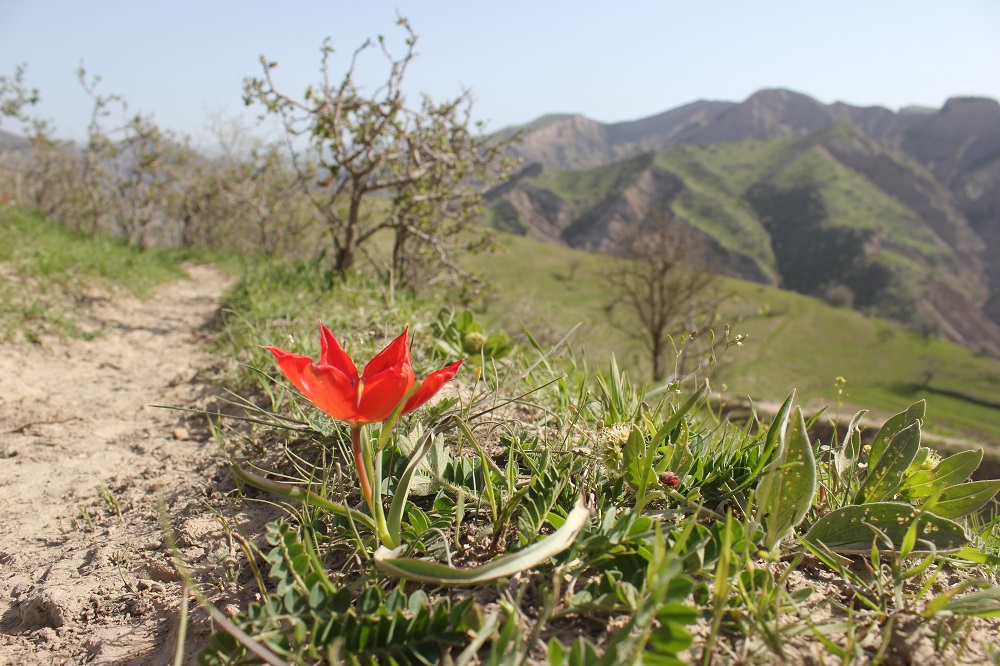
As we know, however, climate is not stable. Although historic conditions in Central Asia have led to this amazing abundance of tulip diversity, humans are causing rapid changes to the climate. As part of our work, we explored the threat climate change poses to tulips. We modelled the current distributions of a range of Central Asian tulips and predicted their future distributions under different climate scenarios. What we found was quite shocking. The habitat of wild tulips in Central Asia is going to decline dramatically as areas of remaining suitable habitat shift to higher altitudes. Unfortunately, tulips are not very good at dispersing pollen and seeds over long distances, so they may struggle to migrate to higher mountain areas and may require some help from humans in the face of this growing threat.
As we began to understand more about wild tulips, their habitat and threats, we could piece together more information about the extinction risk of different tulips. This culminated in May 2022, when we
attended a workshop in Bishkek with collaborators from Central Asia to collate this information and write reports assessing different tulips’ chances of survival. After three very intense days, we had created reports for fifty-three species and assigned each one a corresponding threat status. These reports were
formalised and released on the International Union for Conservation of Nature’s (IUCN) ‘Red List of Threatened Species’ – the world’s most comprehensive information source on the global extinction risk status of animal, fungus and plant species. These were the first Central Asian tulips to have ever been assessed. Sadly, over 50% of wild tulips were deemed to be threatened with extinction, and we
recognised an urgent need to channel resources towards their protection.
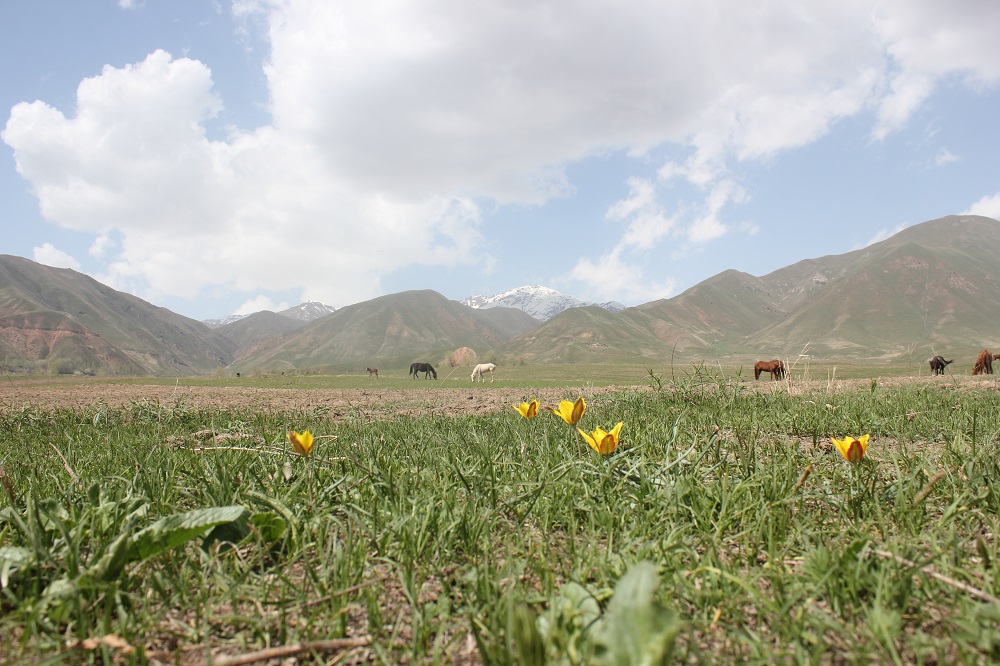
Across this enormous project, an incredible cross-cultural collaboration was established, memories of tulip seeking were made and many interesting conversations were held over plov, a beer and vodka. Yet, the true testament of this project’s success is the long-term impact the information collated in this work will have. Although our work highlights the precarious position of many wild tulips, we are now in a better position to understand their diversity and how best to protect this remarkable plant in the places it calls home.

